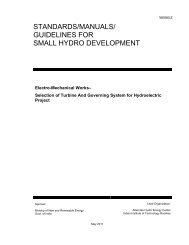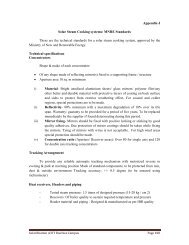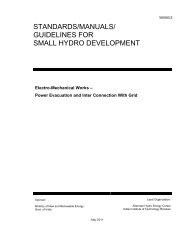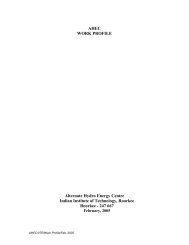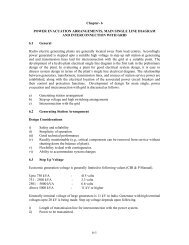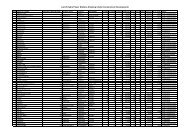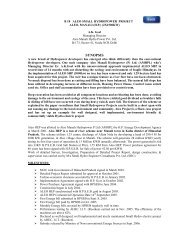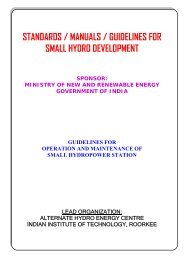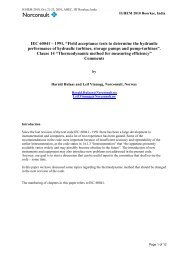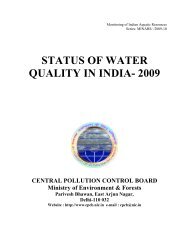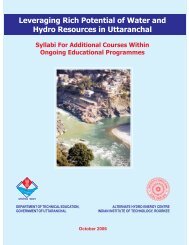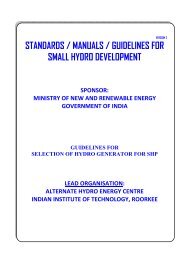standards / manuals / guidelines for small hydro development - AHEC
standards / manuals / guidelines for small hydro development - AHEC
standards / manuals / guidelines for small hydro development - AHEC
Create successful ePaper yourself
Turn your PDF publications into a flip-book with our unique Google optimized e-Paper software.
All live, moving and rotating parts shall be adequately secured in order to avoid dangerto the operating staff. All electrical components shall be electrically earthed.Suitable lifting eyes and <strong>for</strong>cing off bolts shall be provided where required or wherethey will be useful <strong>for</strong> erection and dismantling.2.2 Seismic ConsiderationForces caused by earthquake which may occur <strong>for</strong> the seismic intensity of the zoneconcerned should be taken into account. Stresses resulting after including these loadsshould not exceed permissible stresses. For Himalayan region projects it may be specifiedas under:-Switchyard equipment and structure be designed to safely withstand earthquakeacceleration <strong>for</strong>ce 0.3g both in the vertical and horizontal direction.For other regions refer IS: 1893.2.3 Basic Insulation Level and Insulation Co-ordinationInsulation coordination is the correlation of the insulation of electrical equipment andsystem with the characteristics of protective devices such that the insulation is protectedfrom excessive over voltages. Thus in a substation the insulation of trans<strong>for</strong>mer, circuitbreakers, bus supports, etc. should have insulation strength in excess of the voltage levelsthat can be provided by protective equipment such as lightning arrestors and gaps.According to International Electro Technical Commission Technical Committee No. 28on Insulation Coordination the same is defined as follows by IEC:“Insulation coordination comprises the selection of the electricstrength of equipment and its application in relation to the voltageswhich can appear on the system <strong>for</strong> which the equipment is intendedand taking into account the characteristics of available protectivedevices, so as to reduce to an economically and operationallyacceptable level the probability that the resulting voltage stresses willcause damage to equipment insulation or affect the continuity ofservice”.2.3.1 Over-voltages: The selection of basic insulation level <strong>for</strong> various components ofswitchyard equipment and its coordination is based on the extent of different types ofover voltages and dielectric stresses on insulation of the equipment. Overvoltages areclassified as follows (IS: 3716).(i)(ii)(iii)(iv)Power frequency voltages under normal operating conditionsTemporary OvervoltagesSwitching overvoltagesAtmospheric or Lightning overvoltages1-2



